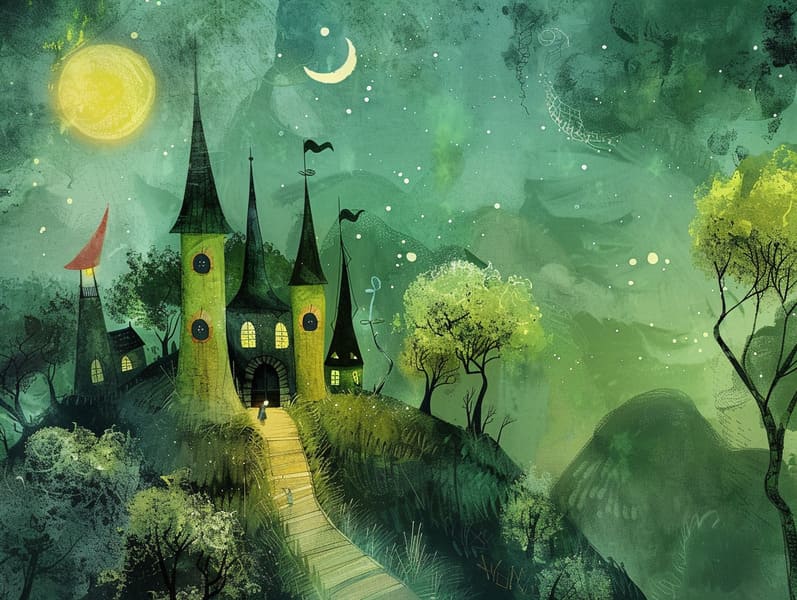The Emergence of Grimm's Fairy Tales with Their Lasting Captivation.
The Emergence of Grimm's Fairy Tales with Their Lasting Captivation.
Blog Article

Vintage fairy tales have timeless appeal. These narratives have been passed down from one generation to the next centuries before they were ever recorded. They emerged from a variety of civilizations, including Eastern traditions. They were initially narrated among mature audiences, often carrying themes and messages relevant to the societal norms and beliefs of the time.
Jacob and Wilhelm Grimm, Jacob and Wilhelm Grimm, were among the first to gather and publish many of these beloved narratives. Their published works, "Grimm's Story Collection," included stories like "The Story of Cinderella," "The Story of Hansel and Gretel," and "Little Snow White," which have since become cornerstones in the world of famous fairy tales. Similarly, Hans Andersen's fanciful narratives, such as "The Mermaid," and "The Duckling's Story," have stolen hearts worldwide, ensuring their place in the pantheon of famous fairy tales.
Though they are centuries old, traditional fairy tales remain as significant as ever, especially as nighttime stories for kids. These charming stories are now available in various formats, including artistically illustrated books, magical animations, and digital storybooks.
Their unwavering allure can be ascribed to several captivating elements:
Life Lessons: Traditional fairy tales often present important moral lessons. Tales like "The Story of the Boy Who Cried Wolf" teach the significance of honesty, while "The Tortoise and the Hare" highlight the qualities of tenacity and unassuming nature. These tales offer young ones clear distinctions between truth and falsehood, forming their moral compass in a subtle yet lasting way.
Kindness and Comprehension: Ancient fairy tales frequently illustrate protagonists facing difficulties and adversities, fostering children to identify with their struggles and rally behind their triumphs. For instance, "The Story of Beauty and the Beast" conveys the significance of seeing inner beauty to realize the real person of a individual, advancing compassion and comprehension.
Cultural Knowledge: Many ancient fairy tales are deeply embedded in the cultural contexts from which they arose. Understanding these narratives can provide delightful insights into different customs, developing a sense of world insight and understanding.
Inventiveness and Imagination: The fantastical elements in classic fairy tales—enchanted objects—inspire children’s visions and dreams. These narratives carry readers to supernatural realms, inspiring innovative dreams and a sense of excitement that endures a lifetime.
Ancient fairy tales are not only mesmerizing but also instructive. They act as fantastical tools in promoting various cognitive and affective skills in young ones. When ancient fairy tales are narrated, they advance language skills by offering new terms and sophisticated sentence structures. This practice also fosters auditory perception and attention span, as children stay focused, anticipating to see what happens next.
Furthermore, reflecting on the themes and characters of traditional fairy tales can improve critical thinking and intellectual skills. The young learn to find patterns, make predictions, and understand cause and effect. These talks also support little ones reveal their thoughts and feelings, adding to their emotional intelligence.
In today’s cyber age, the existence of digital storybooks has made these fairy tales more obtainable than ever. Online platforms and software make available comprehensive collections of old fairy tales that can be seen or listened through anytime, anywhere. Fairy tales read out loud are particularly popular, making available an interactive method for the young to experience these entrancing tales. Voice books and read-aloud videos guide characters and settings to life, often paired with spellbinding sound effects and background music that heighten the story adventure.
The timeless appeal of ancient fairy tales lies in their ability to change to current eras while keeping hold of their underlying messages. Contemporary takes of these narratives often show more diverse protagonists and modern settings, making them pertinent to today’s audience. However, the fundamental themes of boldness, empathy, and integrity remain unchanged, continuing to move kids of all ages.
Classic fairy tales also offer a sense of ease and predictability. They make available a structured narrative with a unmistakable beginning, middle, and end, often wrapping up with the settlement of conflicts and the triumph of honesty over deceit. This foreseeability can be reassuring for children, affording a sense read more of sturdiness in an always shifting world.
Timeless fairy tales continue to charm and edify new generations, maintaining their majesty and importance in modern society. As kids' bedtime tales, they afford a perfect blend of enchantment and education, fostering moral values, empathy, and creativity. The existence of internet fairy tales and the favor of fairy tales told out loud ratify that these traditional tales remain obtainable to new generations.
By keeping and conveying these narratives, we continue to venerate the rich tapestry of legends and cultural heritage. Whether you are exploring a vibrantly illustrated book, experiencing a web-based collection, or listening through an audiobook, the mystique of old fairy tales is always within reach. These fairy tales convey of the eternal power of narratives and its ability to unify us across time and space.
Whether you are seeing a gorgeously illustrated book, delving into a digital collection, or listening to an sound book, the mystique of famous fairy tales is always within reach.
These narratives convey of the everlasting force of storytelling and its ability to bond us across centuries and lands, forming a connection that enchants and educates alike.